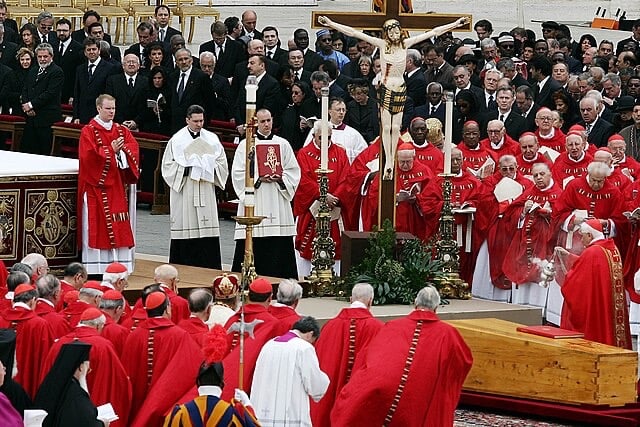A Moment of Transition in the Catholic Church
The Roman Catholic Church has entered a historic phase of reflection and renewal as 133 cardinals from around the globe have gathered in Vatican City to begin the 2025 papal conclave, following the death of Pope Francis on April 21. The conclave, a centuries-old tradition rooted in secrecy and spiritual discernment, will select the next Bishop of Rome and global leader of the 1.4 billion-strong Catholic faithful.
As the heavy doors of the Sistine Chapel close behind the cardinal-electors, the world waits for the rise of a new pontiff—a figure who must not only uphold tradition but also guide the Church through modern-day challenges.
Significance of the 2025 Conclave
This conclave is particularly momentous. It follows the end of a transformative papacy defined by Francis’s outreach to marginalized communities, interfaith dialogue, environmental activism, and efforts to root out abuse. Whoever takes his place will inherit a Church at a crossroads—haunted by scandal but rich with opportunity for renewal.
It is also the largest and most geographically diverse conclave in Catholic history, with cardinals from over 70 nationsparticipating—highlighting the Church’s evolving global character.
The Setting: Vatican City in Mourning and Anticipation
From Papal Funeral to Papal Election
Since Pope Francis’s state funeral, Vatican City has been steeped in a mix of solemnity and expectancy. Mourners from all continents gathered in St. Peter’s Square, but now the focus has shifted from loss to leadership.
Banners of black and gold flutter quietly in the wind, and the Vatican’s Swiss Guards stand with heightened solemnity. The cobbled streets around the Basilica are alive with pilgrims, media crews, and faithful followers praying for divine guidance in the election.
A Global Spiritual Crossroads
Never before has the Church been so globally integrated, and never has the pressure to find a unifying figure been greater. With rising secularism in the West, surging Christianity in the Global South, and a youth disillusioned with organized religion, the next pope must bridge continents, cultures, and convictions.
The Pre-Conclave Rituals and Ceremonies
“Pro Eligendo Pontifice” Mass Sets the Tone
Before any voting can take place, tradition dictates that the cardinal-electors participate in the “Mass for the Election of the Roman Pontiff”, held in St. Peter’s Basilica. This sacred liturgy, known as Pro Eligendo Pontifice, was presided over by Cardinal Giovanni Battista Re, Dean of the College of Cardinals. His homily urged unity, reflection, and prayerful discernment, emphasizing the monumental weight of the task ahead.
The Mass wasn’t just ceremonial—it served as a public expression of the Church’s prayerful mindset, inviting Catholics worldwide to join in spiritual solidarity with the electors. The rich symbolism, Gregorian chants, and Latin prayers underscored the continuity of a millennia-old process in a thoroughly modern age.
The Oath of Secrecy and Entry into the Sistine Chapel
After the Mass, the 133 cardinal-electors processed into the Sistine Chapel, the historic and sacred site of every conclave since 1492. There, beneath Michelangelo’s fresco of the Last Judgment, each cardinal took the solemn oath of secrecy, pledging absolute confidentiality regarding the proceedings.
This oath ensures that the conclave remains free from external pressure, media leaks, and political interference. Once the last oath was sworn, the doors were locked from the outside, and the conclave officially began—a state of spiritual seclusion known as “extra omnes”, Latin for “everyone out.”
Inside the Sistine Chapel, only the cardinal-electors and a few non-voting support personnel remain. The outside world must now wait for the famous chimney atop the chapel to release smoke—black for no decision, white for “Habemus Papam” (we have a pope).
How the Conclave Works
Secrecy, Voting, and Smoke Signals
The papal conclave is among the world’s most secretive decision-making processes. Twice a day, the cardinals cast their votes using handwritten ballots. Each must write the name of a fellow cardinal who is eligible, fold the ballot, and approach the altar one by one to place it in a chalice. Three cardinals, chosen by lot, count the votes.
If no cardinal receives a two-thirds majority, the process repeats until consensus is achieved. After each round, the ballots are burned—along with chemicals that produce black smoke (no decision) or white smoke (a new pope has been chosen).
This unique signal is watched live by millions across the globe, making the chimney of the Sistine Chapel one of the most symbolic visual icons in the world during conclave season.
The Balloting Process Explained
The first round of voting rarely produces a winner—it serves more as an indication of frontrunners and potential alliances. As deliberations continue, the cardinals may begin to consolidate support behind a candidate who embodies unity and spiritual leadership. Between ballots, prayer, informal conversation, and reflection guide the cardinals’ decisions.
While the Holy Spirit is invoked as the guiding force, the reality of personality, politics, and global priorities are always in play.



